Car tyres: Your essential guide
From what tyres fit your car to understanding tyre sizes and how long tyres should last. We explain all in our complete guide to choosing car tyres.
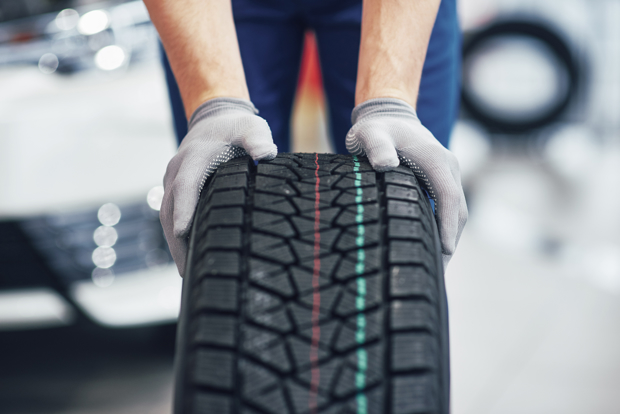
- How long do car tyres last
- How to check your tyre size
- What should your tyre pressures be?
Tyres may not be very interesting in themselves - indeed for most people they are merely a necessary purchase when required. But given that these are the sole things that keep your car in contact with the road - making sure your tyres are in good condition is key to ensuring you are safe out there.
Shopping for tyres can bring up a wide range of tyres from budget makes which you've probably never heard of to household names such as Pirelli and Michelin. With a price tag to match.
But is it worth paying more for these tyres or do budget brands do the same job for far less money? And how long should a set of tyres last you?
Well we're here to answer these questions with our essential guide to tyres. We'll explain everything you need to know about tyres from buying, sizes and types to how to ensure your tyres are safe and legal.
What tyres do I need?
You probably pay little attention to the numbers on the sides of your tyres, until it comes to replacing them.
While most tyre fitting websites can search for tyres based on your registration plate, it's best to check with what you currently have fitted. This means you can be sure you're getting the right tyres for your wheels and are replacing like for like.
The first number in the sequence is the tyre’s width measured in millimetres, so for the tyre below we can tell that the tyre is 205mm wide.
The next number shown is the tyre’s height, but this is expressed as a ratio rather than a measurement. So in our example the height is 45% of the tyre’s width. This works out at 92.25mm.
The R in the sequence indicates that this is a radial tyre, like the vast majority of modern tyres.
The following number is the inside diameter of the tyre measured in inches - this reflects the size the wheels fitted to your car, also measured in inches. In this case 16-inches.
The last number and letter combination are the load index and speed rating. Load rating is how much weight the tyre can support. A tyre with a load index of 83 can support 487kg of weight. The V is the speed rating - the top speed that a tyre is able to safely travel at - in this case 149mph.
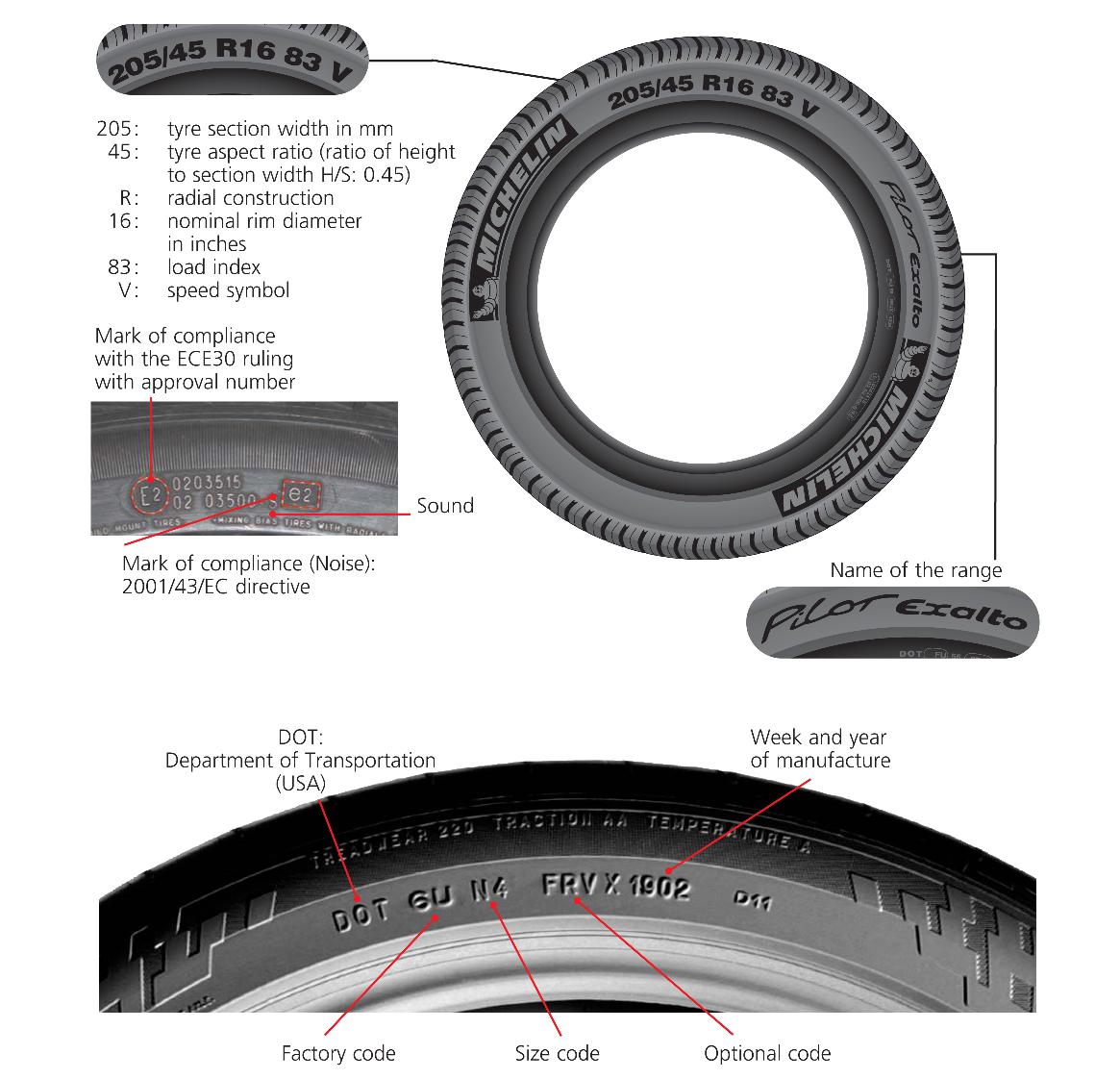
The width of a tyre dictates how much grip is available for cornering, braking and acceleration. The wider a tyre is, the bigger the contact patch - the bit of the tyre in contact with the road - and the bigger the contact patch, the more grip is available.
Although a lot of other factors are involved, a wider tyre will in general have a higher rolling resistance, which is a trade-off for the increased grip. This is why cars with modest performance and high economy have narrower tyres for efficiency, whereas high-performance cars have wider tyres and prioritise grip over efficiency.
| Tyre speed rating | Maximum speed |
| Q | 99mph |
| R | 106mph |
| S | 112mph |
| T | 118mph |
| U | 124mph |
| H | 130mph |
| V | 149mph |
| W | 168mph |
| Y | 186mph |
The aspect ratio of a tyre also has an effect on the way your car behaves on the road. The higher the aspect ratio the taller the tyre is in relation to its width, or how tall the sidewall is.
A tall sidewall contributes to ride comfort by helping to absorb bumps in the road, but the trade-off here is that a tall sidewall deflects more during cornering, giving less accurate response through the steering wheel.
A high-performance car will usually wear a low aspect-ratio tyre for this reason, while economy or comfort-biased cars will have higher aspect ratios.
How long do tyres last?
How long your car tyres last depends on the kind of driving you do and the load you are carrying. A heavy SUV tackling lots of corners is going to get through tyres a lot quicker than a small car that drives mainly on smooth A-roads.
Front tyres should last around 20,000 miles and rear tyres even longer. But this is only a guide - the best way to know when your tyres need changing is to check them regularly.
New tyres usually have a tread depth of around 8mm and the legal limit is 1.6mm although tyre safety experts recommend changing when they get to 3mm tread.
It is recommended that tyres are changed every 20,000 miles or 10 years regardless of the wear and condition, although we have heard of plenty of drivers covering 25,000 to 30,000 miles on a set of tyres and still having more than the legal tread depth left.
The date when a tyre was manufactured is printed on the sidewall so it's easy to see the week and year when a tyre was produced to work out its age. Older tyres will develop weaknesses and can crack as the rubber ages, so it's important to check how old your tyres are.
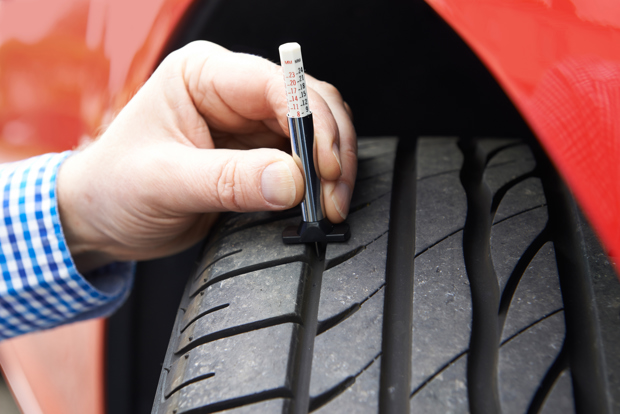
What is the legal tyre tread depth?
If you want to stay the right side of the law in the UK, your tyres need to have a tread depth of at least 1.6mm. Anything lower than this and it's not only an MoT failure, but also illegal.
There's a couple of way to check the tread on your tyres. Tread gauges cost just a few pounds on Amazon and will give you a precise reading. Or you can use an older-style 20p pieces. Insert the outer rim of the coin into the tread and if the outer rim is exposed, the tread is below the legal minimum.
How do I check my tyre pressures?
1. Make sure you know the correct tyre pressures for your car before starting. You can usually find this on a sticker on the inside of the front door or on the fuel filler flap.
2. To accurately measure the current pressure in your tyres you can use a handheld pressure gauge, a portable tyre inflator or an inflator at a fuel station or garage.
3. As tyre pressures rise slightly when the tyres are warm it is best to check them before a journey if possible.
4. Remove the dust cap from the tyre valve and screw the connector firmly on - this should then give you a reading on the measuring device.
5. If you’re using an automatic device you simply set the tyre to the desired pressure and it will inflate until the correct reading has been achieved - and don’t forget to replace the dustcaps afterwards.
What are my tyre pressures?
There’s no point in checking tyre pressures if you don’t have the right information in the first place, so it is worth taking the time to check.
Start by checking the labelling on the side of your tyres. The letters and numbers give the tyre dimensions. It’s important to start here because one model of car can wear several different tyre sizes, so make a careful note of the information which should look something like this: 195/65 R15 91H.
The tyre pressure information for your specific car may be displayed in a number of places. On the inside of driver’s door or the fuel filler flap are the most common locations. If you can't find this the information will also be repeated in the handbook.
Pressures for all the tyre sizes available for your car will be displayed, so check this against the specific information you noted down earlier.
Many manufacturers also provide a set of different pressures depending on the vehicle load. All of these pressures will be safe for your car to use but it is best to choose the recommended levels and don’t be tempted to mix pressure levels front to rear - this could upset the balance of your car considerably.
If you can’t find the relevant information in your vehicle you can search out the correct pressure via the manufacturer’s website or one of a number of independent websites such as tyre-pressures.com or tyresafe.org
What are tyre pressures measured in?
The most common tyre pressure measurements are the imperial PSI (pounds per square inch) or the metric Bar, although some vehicles including some Mercedes-Benz models will display them in kPa (kilopascal) which is also a metric unit. If you need to convert between them, 15PSI is equivalent to 1 bar and 103kPa.
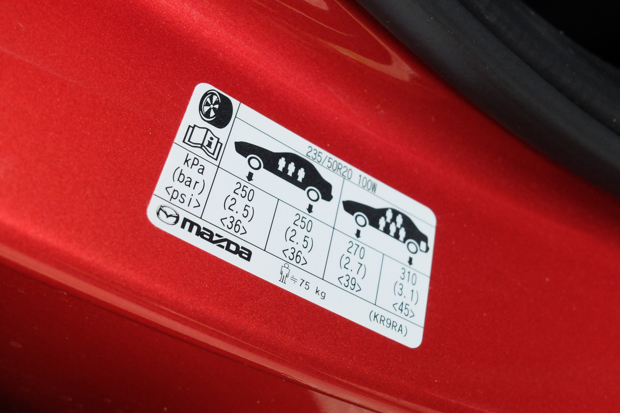
What is TPMS?
TPMS stands for tyre pressure monitoring system and it's been fitted to all new cars in the UK since 2014. It works by electric sensors in each wheel with monitor the individual tyre pressure.
If a tyre pressure drops, the system will alert you, usually via a warning light on your dashboard. Some cars will display the actual pressures for all four tyres so you can see at a glance real time tyre pressures. If your TPMS is faulty or not working, your car will fail its MoT.
How do I know if my tyre needs replacing?
If your tyre has suddenly gone completely flat or has lost pressure compared to the other three, there are a number of factors that could have caused it.
Start by examining the tyre as best you can, looking around the sidewall for scuffs or bulges and feel around the tread area for anything sticking into the tyre. If there are no obvious signs of damage then try reinflating the tyre.
If there’s a significant hole then it should be pretty obvious that you have a problem, but a slow puncture might take several hours or even days to go down again. Unless you happen to be fortunate and your tyre stays inflated, it is likely that it will need replacement or repair.
How much does a replacement tyre cost?
The cost of a replacement tyre will depend on the type of tyre your car uses and the brand of tyre you choose. Generally speaking the smaller the wheel size and the narrower a tyre is, the cheaper it is.
For an average family car like a Nissan Qashqai fitted with 17-inch wheels, prices will range from £80 each for budget tyres to £150 for a premium tyre.
On a small car like a Fiat Panda tyres can be as cheap as £50 for budget brands.
Whereas if you have an SUV with bigger wheels you'll pay at least £150 per tyre with high end makes as much as £250+. If you're replacing all four that's a big one off cost.
A smaller tyre physically contains less materials and will have a lower speed and load rating, so it will inevitably cost you less money.
However, it is crucial to buy a tyre that is suitable for your car. Putting budget tyres on a high-performance vehicle or big SUV will not only affect the way your car drives but also potentially compromise its safety. Remember, these are the only things keeping you in contact with the road.
The other decision you need to make is the brand of tyre. As with most off-the-shelf products, better brands cost more money. With something as critical as tyre choice you should go for the best tyres you can afford.
Budget brands aren’t unsafe - every new tyre sold in the EU must pass strict safety tests - but generally speaking they will perform less well than premium products. All new tyres must now come with a label that indicates its performance in terms of wet grip, efficiency and noise levels, which makes comparison much easier.
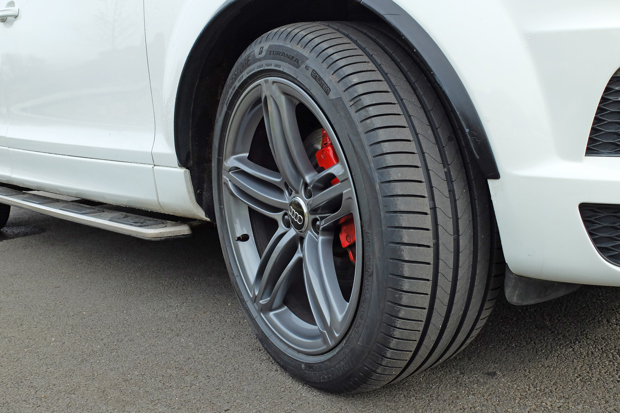
Can damaged tyres be repaired rather than replaced?
Whether your tyre needs replacing or not depends on the damage to it, which in itself can be complex. However, when it comes to getting a tyre repaired, generally speaking this is only possible if there is a puncture in the centre 75% of the tyre tread.
If it is nearer to the outside of the tyre or along the sidewall then a repair will not sufficiently guarantee the safety of the tyre, so any good tyre fitter will recommend replacement instead.
Most companies that offer a tyre repair generally do so for a fixed cost regardless of the tyre size, but it is always worth shopping around to check prices nearby.
Are part-worn tyres safe?
You may also have considered the option of buying a part-worn tyre, which are not illegal to sell in the UK if a number of regulations set out by Trading Standards have been adhered to.
However, a study by TyreSafe concluded that 98% of the part-worn tyres examined during the investigation were sold illegally. A third of these had damage that could render them dangerous. If you do decide to buy part-worn you should check that the seller adheres to the regulations before buying. Ask yourself if it's worth taking the risk.
Can I change the size of my tyre?
The short answer to this is yes, but there are several qualifiers. You may wish to fit a different tyre size to your car because you want to fit different alloy wheels, or you may wish to try and improve the performance or economy of your car.
If you do wish to change the wheels and tyres on your vehicle a shortcut to avoiding problems of this nature is to choose a wheel and tyre combination that is fitted to other versions of your car.
Many popular models will be offered with a variety of wheel sizes depending on the specification, so you can upgrade safe in the knowledge that your car will continue to function properly.
Which manufacturers offer a spare wheel as standard?
Full-size spare wheels and spacesavers are becoming a thing of the past, with an increasing amount of manufacturers opting for either tyre repair kits or run-flat tyres. The table below shows which manufacturers offer a spare wheel and which offer an alternative.
| Manufacturer | Has a full size spare | Has a space saver spare | Has a repair kit | Has run-flat tyres |
| Alfa Romeo | - | Mito Super, Speciale and Veloce, £100 on other trims; Stelvio: £275 | 4C, Giulia, Mito, Stelvio | Giulia Speciale and Veloce, £250 other trims |
| Audi | - | A £199 option | A1, A3 e-tron, Q2, Q5, Q7, R8, TT | - |
| BMW | - | On 2 Series for £75 | 1 Series, i3 |
£180 on 1 Series, 2 Series, 3 Series, 4 Series, 5 Series, 6 Series, 7 Series, X1, X2, X3, X4, X5, X6
|
| Citroen | On Space Tourer | Berlingo Multispace, C1, C3, C3 Aircross (£75 on Touch), C4 Cactus, C4 / Grand C4 Picasso | Berlingo Multispace Touch, C1 Touch, C3 Touch, C3 Aircross Touch, C4 Cactus Touch, C4 / Grand C4 Picasso with Blue HDI 150 engine, Space Tourer Touch | - |
| Dacia | - | Duster £150, Logan and Sandero £100 | Duster, Logan, Sandero | - |
| Fiat | 500X £175, Doblo £170, Qubo £100 | Tipo, 500 £100, 500L £125, 500X £100, Panda £60 | 124 Spider, 500, 500L, 500X, Doblo, Panda, Punto, Qubo | - |
| Ford | Fiesta £100 (not Style), Focus £100 (Zetec and Titanium), Ka+ £100, Mondeo £100 | Edge, Focus, Galaxy, Kuga, Mondeo, S-Max, | Ecosport, Fiesta, Ka+, Mustang | - |
| Honda | - | CR-V | Civic, HR-V, Jazz, NSX | - |
| Hyundai | i800, Santa Fe, Tucson | i10, i20, i30, ix20, i40, Ioniq Hybrid, Kona | i10 (S/SE Blue), i20 S, S Air, SE and Prem Nav 1.0 TDGi, i30 S, Ioniq Plug-In Hybrid and electric, Kona S, Tucson S | - |
| Infiniti | - | Q70, QX70 | Q30, QX30 | Q30 Sport, QX30 with 19-inch alloys, Q50, Q60 |
| Jaguar | F-Pace £370 | XE £160, XF £190, XJ £140 Luxury/Premium, sandard on Portfolio, Autobiography and R-Sport, E-Pace £272, F-Pace £160, F-Type £377 | XE, XF, XJ Luxury and Premium, E-Pace, F-Pace, F-Type | - |
| Jeep | Wrangler, Renegade £200 | Grand Cherokee, Cherokee Trailhawk £120, Compass £120, Renegade £150 | Cherokee, Compass, Renegade | - |
| Kia | Niro, Sorento | Std on Carens, Ceed, Optima, Soul, Sportage, Venga, Picanto £30, Rio £42, Stinger £41, Stonic £38 | Ceed GT, Optima 3, GT Line S, SW and PHEV, Picanto, Rio, Soul Sport and EV, Stinger, Stonic, | - |
| Land Rover | - | Range Rover, Range Rover Sport, Velar, Evoque £165 | Discovery Sport (seven-seater), Evoque, Range Rover Hybrid, Range Rover Sport Hybrid | Discovery, Discovery Sport (five-seater) |
| Mazda | - | - | 2, 3, 6, CX3, CX5, MX5 | - |
| Mercedes-Benz | - | - | A-Class, B-Class, C-Class, GLA, GLC, GLE 500e | S-Class, E-Class, GLE, GLS, GLA AMG Line, C-Class £595 with AMG alloys |
| MG | - | - | GS, MG3, ZS | - |
| MINI | - | £100 on Clubman, £100 on Countryman | Three-door, five-door, Convertible, Clubman, Countryman | - |
| Mitsubishi | Shogun | Outlander (diesel) | ASX, Eclipse Cross, Mirage, Outlander PHEV | - |
| Nissan | - | Juke Y N-Connecta and Tekna DIG-T 4WD CVT and X-Trail, Leaf £170, Qashqai £215 | Juke, Leaf, Micra, Qashqai | - |
| Peugeot | 208 GTI Prestige, 2008 petrols, Traveller, 308 £98, 3008 £98 | 108, 208, 308, 2008 diesel, 3008, 5008, 508 | 108 Access/Active, 5008 2.0 HDI | - |
| Porsche | - | £270 on Cayenne | 718 Boxster, 718 Cayman, 911, Panamera, Macan, Cayenne | - |
| Renault | - | Captur £110, Clio £110, Kadjar £110, Koleos £110, Megane £110, Scenic / Grand Scenic £110, Twingo £110 | Captur, Clio, Kadjar, Koleos, Megane, Scenic / Grand Scenic, Twingo, Twizy, Zoe | - |
| SEAT | - | Arona, Ateca, Ibiza, Leon, Toledo | Mii | - |
| Skoda | Karoq (£250) | Citigo £55, Fabia £90, Karoq £150, Kodiaq £105, Octavia £105, Rapid £85, Superb £105 | Citigo, Fabia, Karoq, Kodiaq, Octavia, Rapid, Superb | - |
| Subaru | Forester, Levorg, Outback, WRX STI | - | BRZ, Impreza, XV | - |
| Suzuki | Jimny | Baleno £219, Celerio £219, Ignis £219 (4WD £249), S-Cross £219, Swift £219 (4WD £249), Vitara £219 | Baleno, Celerio, Ignis, S-Cross, Swift, Vitara | - |
| Toyota | Land Cruiser | Auris, Avensis, Prius Active and Bus Ed, Prius+, Rav-4 | Aygo, Avensis Touring Sports, C-HR, GT86, Prius Excel and Bus Ed+, Verso, Prius plug-in | - |
| Vauxhall | - | Adam £110, Astra £110, Cascada £110, Corsa £110, Crossland X £110, Grandland X £110, GTC £110, Insignia £110, Mokka X £110, Viva £110, Zafira Tourer £110 | Adam, Astra, Cascada, Corsa, Crossland X, Grandland X, GTX, Insignia, Mokka X, Viva, Zafira Tourer | - |
| Volkswagen | Arteon, Passat GT & Alltrack, other Passat models £165 | Beetle, Golf, Golf SV, Passat, Polo, Tiguan, T-Roc, Touareg, Up £50 take Up, Up beats and Up GTI | Golf GTE and e-Golf, Passat GTE and GTE Advance, Polo beats, Sharan, Tiguan 2.0 BiTDI DSG, Tiguan Allspace, Touran, Up. | - |
| Volvo | - | S60 £150, S90 £150 (not Twin Engine), V40 petrols £150, V60 £150, V90 £150 (not Twin Engine), XC60 £150 (not Twin Engine), XC90 £150 (not Twin Engine) | S60, S90, V40, V60, V90, XC60, XC90 | - |
